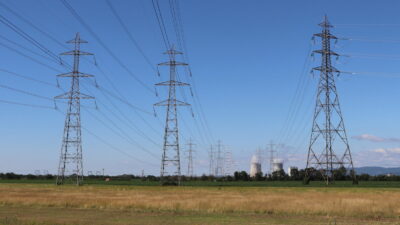Company responses to Ofwat’s slow-track draft determinations
Introduction
Water companies have recently responded to Ofwat’s slow-track draft determinations (DD).1 The key themes from those responses can be put into three key categories:
- cost assessment;
- financial issues;
- outcome targets.
Cost assessment
While supportive in certain areas, a number of companies have criticised Ofwat’s approach to determining efficient costs.
- Base total expenditure (BOTEX): most companies are supportive of Ofwat’s BOTEX modelling approach.
- Growth expenditure: many companies have criticised Ofwat’s approach of including growth expenditure in its base expenditure models (creating ‘BOTEX plus’ models).
- Enhancement expenditure: a number of companies have raised issues with Ofwat’s approach to specific enhancement areas.
- Costs and outcomes trade-offs: a number of companies consider that Ofwat’s approach to cost assessment and its approach to performance commitments ignores the trade-offs between cost and service.
- Forecast cost drivers: several companies have criticised Ofwat’s approach to forecasting cost drivers.
- Frontier shift: several companies have made representations that Ofwat’s frontier shift assumptions are excessive.
At this stage of the price control review, it seems unlikely that we will see major, industry-wide changes to Ofwat’s approach at the final determinations.
However, of the above areas, some issues could be addressed via company-specific amendments to the draft determinations (for example, company-specific adjustments to particular enhancement expenditure areas). Of the industry-wide issues, Ofwat may also make some adjustments to its ‘BOTEX plus’ modelling.
Finance issues
The key messages from the responses of the fast-track, slow-track and significant scrutiny companies to Ofwat’s DD on ‘aligning risk and return’ are as follows.
- Cost of capital: a number of companies have proposed alternative estimates of the cost of capital (ranging from 2.29% to 2.8% RPI real) or used Ofwat’s ‘early view’ of the cost of capital (2.4% RPI real) in their business plans.
- Financeability: most companies have raised concerns regarding the financeability of their business plans on either the notional or an actual basis. A couple of companies have not commented on financeability, and one company, Portsmouth Water, has provided assurance on its financeability on both the notional and an actual basis.
- Risk analysis—return on regulated equity (RORE): the fast-track companies did not discuss RORE and ODI ranges in detail in their responses to the DD. Most of the slow-track and significant scrutiny companies are critical of the ‘negatively skewed’ incentives package.
Outcome targets
The third key area in which companies have raised concerns regarding the realism of Ofwat’s interventions is in relation to performance commitment targets (PCs) and financial outcome delivery incentives (ODIs).
- Common and comparable performance commitments PCs: a number of companies do not agree that: improvements to service are funded in base expenditure and upper-quartile (UQ) targets are achievable.
- Valuation: some companies argue that their own customer valuation research, developed through a customer-engagement process, should take priority over Ofwat-led interventions in determining PCs and ODI rates, and that the relationship between cost and value-of-service has been ignored (such as in the case of further reductions in leakage).
- Company-specific issues: a number of companies have voiced concern about Ofwat’s lack of acceptance of company-specific factors for common and comparable ODIs (which is in contrast to Ofwat’s treatment of company-specific issues in the cost claims).
- Trade-offs: as discussed above, some companies note that Ofwat has not taken sufficient account of the cost versus service UQ trade-off—that companies that are UQ on service are unlikely to be UQ on cost and vice-versa—and that this leads to impossible targets.
Many companies highlight that the further downward skew in prospective financial performance resulting from Ofwat’s PC/ODI interventions compound the already challenging allowances for costs and financial issues (as discussed above).
Summary
A number of areas that the companies have responded to are with regards to overarching framework or methodology points. Some of these areas may be difficult for Ofwat to amend at this stage of the process. As such, it seems likely that the final determinations will be difficult for several companies to accept—but we will have to wait until December to see how many companies find themselves in this position.
Related

Ofgem RIIO-3 Draft Determinations
On 1 July 2025, Ofgem published its Draft Determinations (DDs) for the RIIO-3 price control for the GB electricity transmission (ET), gas distribution (GD) and gas transmission (GT) sectors for the period 2026 to 2031.1 The DDs set out the envisaged regulatory framework, including the baseline cost allowances,… Read More

Time to get real about hydrogen (and the regulatory tools to do so)
It’s ‘time for a reality check’ on the realistic prospects of progress towards the EU’s ambitious hydrogen goals, according to the European Court of Auditors’ (ECA) evaluation of the EU’s renewable hydrogen strategy.1 The same message is echoed in some recent assessments within member states, for example by… Read More

